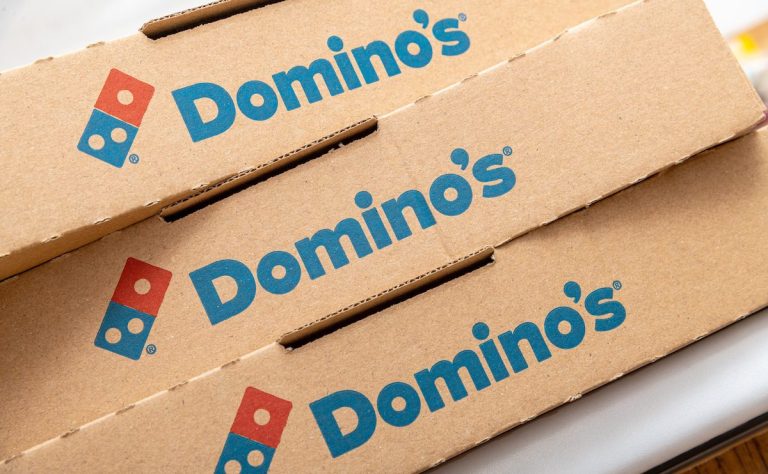
Domino’s pickup sales rise and delivery falls as consumers seek affordable restaurant options amid inflation.
In recent years, the pizza quick-service restaurant (QSR) giant has been looking to encourage adoption of pickup to both save on labor costs internally and engage consumers who might otherwise be put off by the high cost of delivery. Now, as the company shared on a call with analysts Thursday (April 27) discussing its latest earnings results, carryout orders were up by 13.4% year over year in the first quarter, while delivery decreased 2.1%.
CEO Russell Weiner maintained that this pickup growth has not come out of the brand’s delivery channel, but rather that the restaurant is reaching new customers.
“In the U.S., we believe that the QSR pizza delivery and carryout businesses continue to be incremental to each other with limited overlap,” Weiner said on the call. “The balance we have in our stores with carryout contributing around half the orders and 40% of sales has allowed us to mitigate the more recent macro headwinds in the delivery category.”
Among the brand’s strategies to boost pickup adoption were its limited-edition $3 “tips” for carryout customers, a credit they could apply to future orders, and its Apple CarPlay integration to make for easier in-vehicle ordering.
There has certainly been increased demand for pickup relative to delivery throughout this inflationary period. Research from PYMNTS’ study “Connected Dining: Rising Costs Push Consumers Toward Pickup,” for which we surveyed more than 2,100 United States consumers in January, revealed that 39% of restaurant customers ordered their most recent meal for pickup, and only 10% did so for delivery.
Plus, the findings showed that nearly half of all consumers (48%) have been more likely to pick up their restaurant orders themselves rather than have them delivered due to inflation.
Weiner noted on the Domino’s call that the overlap between the delivery and pickup channels is around 15%, such that the majority of the brand’s growth in the pickup channel comes from new diners engaging with the restaurant.
“We’re seeing a lot of trade-down from non-Domino’s carryout into Domino’s carryout, and I think it’s those consumers we’re talking about,” he noted.
Indeed, a sizable number of consumers — although far from the majority — is shifting from more expensive restaurants to less expensive, according to research from the December edition of PYMNTS’ Restaurant Digital Divide study, “The 2022 Restaurant Digital Divide: Restaurant Customers React to Rising Costs, Declining Service,” which drew from a survey of more than 2,300 consumers who regularly purchase food from restaurants.
Twenty-two percent of those with an annual income of less than $50,000, 15% of those earning between $50,000 and $100,000, and 11% making more than $100,000 per year have shifted to purchasing from lower-priced restaurants during this inflationary period.
Additionally, Domino’s attributed its decrease in delivery sales both to the ongoing industry-wide shift away from delivery as we leave the early stages of the pandemic further behind and to the economic pressures that consumers are feeling right now.
“The delivery business is still challenged by … constrained budgets for households with relatively lower disposable income, particularly when factoring fees and tips, prompting them to shift their delivery occasion to cooking at home,” Chief Financial Officer Sandeep Reddy said on the call.
Sure enough, research from PYMNTS’ study “Consumer Inflation Sentiment: Inflation Slowly Ebbs, but Consumer Outlook Remains Gloomy,” which drew from a survey of more than 2,100 consumers, found that 78% have been eating at home more often to save money amid inflation.